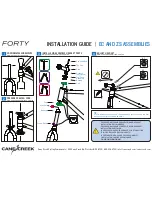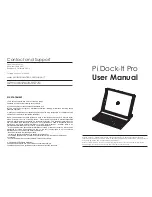
4
6. Additional warning notes
Lead-acid and NiCd batteries shall preferably be accommodated
in separate rooms. Where both battery types are located in the
same room, the charging gases from the lead-acid batteries must
be kept away from the NiCd batteries. Tools for lead-acid batteries
must not be used for NiCd batteries.
Risk of short circuit and fire:
Do not place electrically conductive objects such as tools etc. on
top of the battery!
Risk of injury:
No rings or metal bracelets should be worn during the assembly
of the battery.
Risk of explosion:
Open the doors of the battery cabinet during charging so that the
charging gases can escape.
The charging gases from batteries are explosive. Do not allow
naked flames, sparks or other sources of ignition in the vicinity of
the battery!
Caution – potassium hydroxide solution is corrosive!
A potassium hydroxide solution is used as electrolyte. It is a
highly corrosive liquid which can cause severe damage to health
if it comes into contact with eyes or skin (risk of blinding). Even
swallowing a small quantity may cause internal injuries.
When working with the electrolyte, and on the cells or batteries,
rubber gloves, safety glasses with side guards, and protective
clothing must always be worn!
Contact with the eyes:
Flood eyes immediately with large quantities of water for 10 to 15
minutes. Consult a doctor immediately.
Contact with the skin:
Remove contaminated clothing immediately and wash the
affected skin areas with large quantities of water. In case of
discomfort seek medical advice.
Swallowing:
Rinse the mouth immediately with large quantities of water and
keep drinking large amounts of water. Do not provoke vomiting.
Call an emergency doctor immediately.
In the event of injuries:
Rinse thoroughly for a long time under running water. Consult a
doctor immediately.
• Electrolyte level
Visually check the electrolyte level. Refilling is recommended
when the electrolyte level reaches the “MIN“ mark. However it
must never drop below the “WARNING LEVEL” mark. Adjust
the electrolyte level only in fully charged conditions. Only use
distilled or deionized water to top-up the cells in accordance
with IEC 60993:1989.
NOTE: Once the battery has been filled with the correct electrolyte
at the factory, there is no need to regulary check the electrolyte
density. Interpretation of density measurements is difficult and
could lead to misunderstandings.
• Electrical parameters
Check the float voltage measurements of every single cell and
the battery charging current.
It is important that the recommended charging voltage remains
unchanged. High water consumption of the battery is usually
caused by improper voltage settings of the charger. If a single-
cell voltage of below 1.35V is detected during float charging, it
is recommend to charge the cell(s) separately in accordance to
section 3.5.1 Commissioning with constant current
If a battery is connected in parallel, the charging current in the
strings should also be checked to ensure equality.
• Electrolyte temperature:
Check the electrolyte temperature from one of the cells in the
middle of the battery from time to time. The temperature of the
electrolyte should never 45°C, as higher temperatures
have a detrimental effect on the performance and lifetime of
the cells. During charging, the electrolyte temperature should
be
≤
35°C. In the case of the temperature exc45°C, the
charging should be temporarily interrupted until the electrolyte
temperature has dropped to +35°C. In the case of low ambient
temperatures or electrolyte temperatures that reduce to –25°C,
this does not have a detrimental effect on the battery, and only
causes a temporary reduction of capacity.
Extended service inspection:
Regular check every 24 months
In addition to the standard service inspection the following
measures are required:
• Connector torque and corrosion protection:
Check that all connectors, nuts and screws are correctly
torqued. All metal parts of the battery should be coated with a
thin layer of anti-corrosion grease supplied by GAZ. Do not coat
any plastic parts of the battery, for example cell cases.
Measurement readings - battery log book:
It is recommended to utilize a battery log book. This log book
should record all significant events such as power cuts, service
activities, inspections, discharge tests, equalizing charges, topping




























